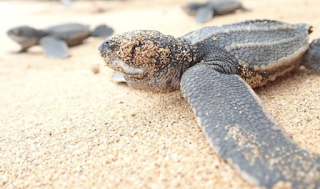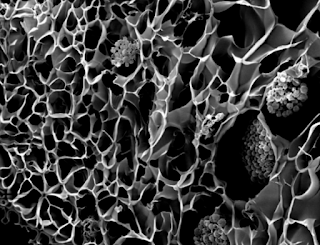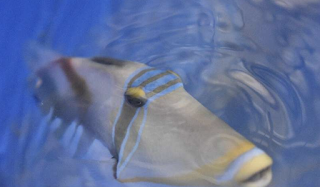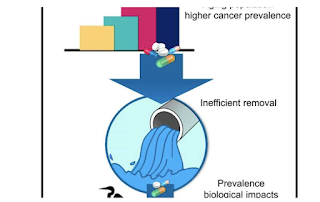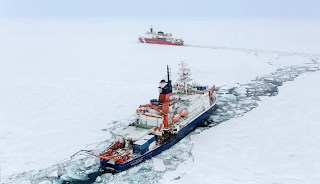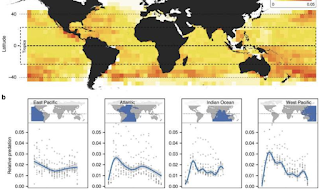Pope suggests COVID- 19 is ‘nature’s response’, Fish kicking the bucket due to microplastics, Unpredictable change in fish size, Tools to identify sex in sea turtles, Marine species capable of destroying viruses, Atomic bombs provide answers and much more…
1. Pope suggests COVID- 19 may be ‘nature’s responses’ to climate change
 Pope Francis suggested that the outbreak of the novel coronavirus may be one of “nature’s responses” to people around the world ignoring the harsh consequences of climate change. “There is an expression in Spanish: ‘God always forgives, we forgive sometimes, but nature never forgives,'” the Pope said in an interview with The Tablet, a Catholic weekly produced in the United Kingdom, that was published on Wednesday. Asked about whether he thought the coronavirus pandemic was an opportunity for ecological conversion and a reassessment of priorities and lifestyles, the pope stressed that society has not responded to “partial catastrophes” stemming from the climate crisis.
Pope Francis suggested that the outbreak of the novel coronavirus may be one of “nature’s responses” to people around the world ignoring the harsh consequences of climate change. “There is an expression in Spanish: ‘God always forgives, we forgive sometimes, but nature never forgives,'” the Pope said in an interview with The Tablet, a Catholic weekly produced in the United Kingdom, that was published on Wednesday. Asked about whether he thought the coronavirus pandemic was an opportunity for ecological conversion and a reassessment of priorities and lifestyles, the pope stressed that society has not responded to “partial catastrophes” stemming from the climate crisis.
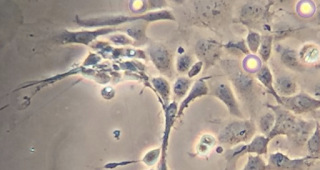 It’s become an all-too-common variety of news story: Dead whales whose digestive systems are clogged with plastic. Increasing numbers of seabirds eating plastic, often with dire consequences. Ditto with turtles and fish. Plastic ingestion by aquatic life is well documented. Less well known is the damage plastic does to the immune systems of fish. “There’s very little research done on that,” Patty Zwollo said. “A lot of studies have focused on the larger pieces of plastics. I think the field is still trying to figure out where the microplastics are in different animals, including fish.”
It’s become an all-too-common variety of news story: Dead whales whose digestive systems are clogged with plastic. Increasing numbers of seabirds eating plastic, often with dire consequences. Ditto with turtles and fish. Plastic ingestion by aquatic life is well documented. Less well known is the damage plastic does to the immune systems of fish. “There’s very little research done on that,” Patty Zwollo said. “A lot of studies have focused on the larger pieces of plastics. I think the field is still trying to figure out where the microplastics are in different animals, including fish.”3. Unpredictable changes in fish size due to climate change
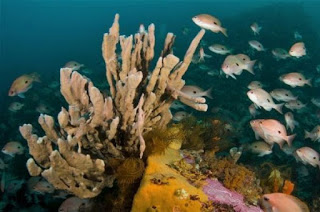 Global climate change will affect fish sizes in unpredictable ways and, consequently, impact complex food webs in our oceans, a new Institute for Marine and Antarctic Studies (IMAS)-led study has shown. Led by IMAS and Centre for Marine Socioecology scientist Dr. Asta Audzijonyte and published in the journal Nature Ecology and Evolution, the study analyzed three decades of data from 30,000 surveys of rocky and coral reefs around Australia. Dr. Audzijonyte said the study confirmed that changes in water temperature were responsible for driving changes in average sizes of fish species across time and spatial scales.
Global climate change will affect fish sizes in unpredictable ways and, consequently, impact complex food webs in our oceans, a new Institute for Marine and Antarctic Studies (IMAS)-led study has shown. Led by IMAS and Centre for Marine Socioecology scientist Dr. Asta Audzijonyte and published in the journal Nature Ecology and Evolution, the study analyzed three decades of data from 30,000 surveys of rocky and coral reefs around Australia. Dr. Audzijonyte said the study confirmed that changes in water temperature were responsible for driving changes in average sizes of fish species across time and spatial scales.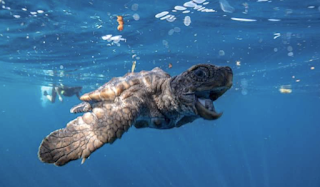 Unlike humans, sea turtles and other reptiles like crocodiles do not have sex chromosomes. Their sex is defined during development by the incubation environment. In sea turtles, sex is determined by the nest’s temperature: warmer temperatures produce females and cooler temperatures produce males. It is especially challenging to identify the sex of hatchling sea turtles because they lack external sexual organs and heteromorphic sex chromosomes—no X or Y. To date, there are a limited number of ways to reliably identify sex in turtle hatchlings. With the rapid increase of global temperatures, there is an urgent need to clearly assess sex ratios in these imperiled animals.
Unlike humans, sea turtles and other reptiles like crocodiles do not have sex chromosomes. Their sex is defined during development by the incubation environment. In sea turtles, sex is determined by the nest’s temperature: warmer temperatures produce females and cooler temperatures produce males. It is especially challenging to identify the sex of hatchling sea turtles because they lack external sexual organs and heteromorphic sex chromosomes—no X or Y. To date, there are a limited number of ways to reliably identify sex in turtle hatchlings. With the rapid increase of global temperatures, there is an urgent need to clearly assess sex ratios in these imperiled animals.
The largest turtle in the ocean, the leatherback gets its name from its tough, rubbery skin. Migrating long distances a year, the turtle can cross the Pacific Ocean. But with threats like getting tangled in fishing gear, the future for one distinct population looks “dire,” say conservation groups. At the current rate of decline, the critically endangered Eastern Pacific leatherback turtle will vanish within 60 years. We have just 10 years left to put measures in place to save it, says a group of conservation scientists and organizations including Fauna & Flora International (FFI).
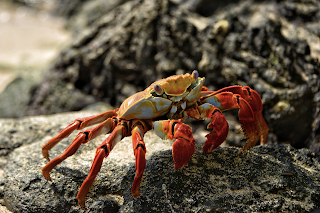 A new study explained how certain marine animals protect other species on Earth from viruses found in water. According to the authors of the study, these animals can effectively remove viral particles from their environment using various techniques. Past studies have revealed that the ocean is home to millions of different virus species. In fact, a milliliter of water can contain as many as 10 million viruses. Despite the number of viral particles in the ocean, they are effectively kept at bay by certain animals living in the water. In a new study published in the journal Nature, lead author Jennifer Welsh, a marine ecologist from the Royal Netherlands Institute for Sea Research, explained that there are certain marine animal species that are capable of getting rid of viruses in the ocean.
A new study explained how certain marine animals protect other species on Earth from viruses found in water. According to the authors of the study, these animals can effectively remove viral particles from their environment using various techniques. Past studies have revealed that the ocean is home to millions of different virus species. In fact, a milliliter of water can contain as many as 10 million viruses. Despite the number of viral particles in the ocean, they are effectively kept at bay by certain animals living in the water. In a new study published in the journal Nature, lead author Jennifer Welsh, a marine ecologist from the Royal Netherlands Institute for Sea Research, explained that there are certain marine animal species that are capable of getting rid of viruses in the ocean.
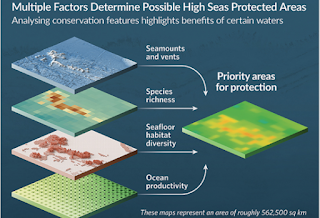 Often considered desolate, remote, unalterable places, the high seas are, in fact, hotbeds of activity for both people and wildlife. Technology has enabled more human activity in areas once difficult to reach, and that in turn has brought a growing presence of industries such as fishing, mining and transportation in international waters — the ocean beyond 200 nautical miles from any coast. “The high seas are the planet’s last global commons, yet marine life and resources on the high seas are at risk of being overexploited and degraded under the current fragmented framework of management. The world needs and deserves a comprehensive legal mechanism to protect high seas biodiversity now and into the future.”
Often considered desolate, remote, unalterable places, the high seas are, in fact, hotbeds of activity for both people and wildlife. Technology has enabled more human activity in areas once difficult to reach, and that in turn has brought a growing presence of industries such as fishing, mining and transportation in international waters — the ocean beyond 200 nautical miles from any coast. “The high seas are the planet’s last global commons, yet marine life and resources on the high seas are at risk of being overexploited and degraded under the current fragmented framework of management. The world needs and deserves a comprehensive legal mechanism to protect high seas biodiversity now and into the future.”
Read more from “University of California – Santa Barbara”
 Data from atomic bomb tests conducted during the Cold War have helped scientists accurately age the world’s biggest fish. Whale sharks are large, slow-moving and docile creatures that mainly inhabit tropical waters. They are long-lived but scientists have struggled to work out the exact ages of these endangered creatures. But using the world’s radioactive legacy they now have a workable method that can help the species survive. Whale sharks are both the biggest fish and the biggest sharks in existence. Growing up to 18m in length, and weighing on average of about 20 tonnes, their distinctive white-spotted coloration makes them easily recognizable.
Data from atomic bomb tests conducted during the Cold War have helped scientists accurately age the world’s biggest fish. Whale sharks are large, slow-moving and docile creatures that mainly inhabit tropical waters. They are long-lived but scientists have struggled to work out the exact ages of these endangered creatures. But using the world’s radioactive legacy they now have a workable method that can help the species survive. Whale sharks are both the biggest fish and the biggest sharks in existence. Growing up to 18m in length, and weighing on average of about 20 tonnes, their distinctive white-spotted coloration makes them easily recognizable.Researchers from Cambridge University and University of California San Diego have 3D printed coral-inspired structures that are capable of growing dense populations of microscopic algae. Their results, reported in the journal Nature Communications, open the door to new bio-inspired materials and their applications for coral conservation. In the ocean, corals and algae have an intricate symbiotic relationship. The coral provides a host for the algae, while the algae produce sugars to the coral through photosynthesis. This relationship is responsible for one of the most diverse and productive ecosystems on Earth, the coral reef.
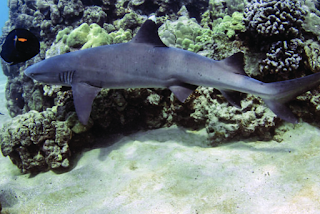 The National Marine Fisheries Service was asked in a lawsuit filed in Hawaii to protect Pacific oceanic white-tip sharks, which are listed as threatened under the federal Endangered Species Act. The environmental law firm Earthjustice filed the lawsuit on behalf of several conservation groups, including the Conservation Council for Hawaii and Michael Nakachi, a Native Hawaiian cultural practitioner and owner of a local scuba diving company, the Garden Island reported. “No protections exist to prevent fisheries from capturing oceanic white-tip sharks as bycatch,” said Moana Bjur, executive director of the Conservation Council for Hawaii. “That needs to change if we are to prevent this incredible apex predator from going extinct. That’s why we’re going to court.”
The National Marine Fisheries Service was asked in a lawsuit filed in Hawaii to protect Pacific oceanic white-tip sharks, which are listed as threatened under the federal Endangered Species Act. The environmental law firm Earthjustice filed the lawsuit on behalf of several conservation groups, including the Conservation Council for Hawaii and Michael Nakachi, a Native Hawaiian cultural practitioner and owner of a local scuba diving company, the Garden Island reported. “No protections exist to prevent fisheries from capturing oceanic white-tip sharks as bycatch,” said Moana Bjur, executive director of the Conservation Council for Hawaii. “That needs to change if we are to prevent this incredible apex predator from going extinct. That’s why we’re going to court.”
Editorial Note: Sea Save Foundation fought for and succeeded in getting oceanic white tip sharks listed on CITES Appendix II
11. Vexing Nemo: Motorboat noise makes clownfish stressed and aggressive
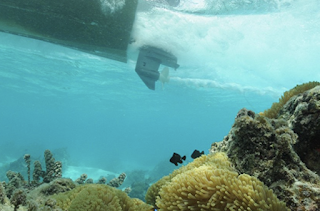 Working on the reefs around Moorea in French Polynesia, an international team of scientists exposed 40 pairs of clownfish to recordings of natural reef sounds or motorboat noise for up to two days. Motorboat noise caused clownfish to hide in the protective tentacles of their host anemone, move less into open water to feed and to be more aggressive towards domino damselfish that also reside in the anemone. The researchers – from France, Chile and the UK – also found that noise-affected anemonefish were unable to respond appropriately to a second stressor, likely putting them at greater risk from threats such as predators and climate change.
Working on the reefs around Moorea in French Polynesia, an international team of scientists exposed 40 pairs of clownfish to recordings of natural reef sounds or motorboat noise for up to two days. Motorboat noise caused clownfish to hide in the protective tentacles of their host anemone, move less into open water to feed and to be more aggressive towards domino damselfish that also reside in the anemone. The researchers – from France, Chile and the UK – also found that noise-affected anemonefish were unable to respond appropriately to a second stressor, likely putting them at greater risk from threats such as predators and climate change.
12. Natural light flicker can help prevent detection
Movement breaks camouflage, making it risky for anything trying to hide. New research, published in the Proceedings of the Royal Society B today [1 April] has shown that dynamic features common in many natural habitats, such as moving light patterns, can reduce being located when moving. Dynamic illumination is particularly common in coral reefs, where patterns known as ‘water caustics’ play chaotically in the shallows. Researchers from the University of Bristol and the University of Queensland carried out behavioural experiments on the Great Barrier Reef, Australia.
13. Phytoplankton provide evidence that carbon sequestration models may have been too optimistic
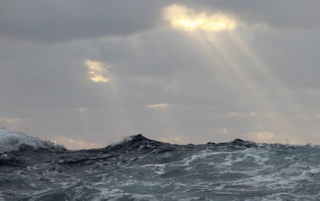 A study that included the first-ever winter sampling of phytoplankton in the North Atlantic revealed cells smaller than what scientists expected, meaning a key weapon in the fight against excess carbon dioxide in the atmosphere may not be as powerful as had been thought. Thus, commonly used carbon sequestration models might be too optimistic. The Oregon State University research into the microscopic algae, part of NASA’s North Atlantic Aerosols and Marine Ecosystems Study, was published this week in the International Society for Microbial Ecology Journal.
A study that included the first-ever winter sampling of phytoplankton in the North Atlantic revealed cells smaller than what scientists expected, meaning a key weapon in the fight against excess carbon dioxide in the atmosphere may not be as powerful as had been thought. Thus, commonly used carbon sequestration models might be too optimistic. The Oregon State University research into the microscopic algae, part of NASA’s North Atlantic Aerosols and Marine Ecosystems Study, was published this week in the International Society for Microbial Ecology Journal.
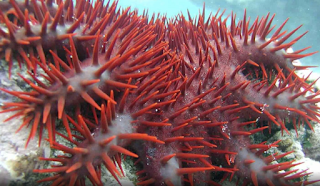 Research that shows juvenile starfish can lurk harmlessly for more than six years could force a rethink on the crown of thorns culling methods used to protect corals on the Great Barrier Reef. The coral-eating crown of thorns starfish that devastate tropical reefs can lie in wait as harmless young herbivores for more than six years while coral populations recover from previous attacks or coral bleaching, new research has shown.
Research that shows juvenile starfish can lurk harmlessly for more than six years could force a rethink on the crown of thorns culling methods used to protect corals on the Great Barrier Reef. The coral-eating crown of thorns starfish that devastate tropical reefs can lie in wait as harmless young herbivores for more than six years while coral populations recover from previous attacks or coral bleaching, new research has shown.
15. The Ningaloo Canyons orchestrate an artistic masterpiece
 Scientists from the Schmidt Ocean Institute have discovered an unusual organism in the eastern Indian Ocean, off the remote western coast of Australian. The researchers took video of the Apolemia – a type of siphonophore in the deep-sea environment known as the Ningaloo Canyons. “Check out this beautiful ‘giant’ siphonophore Apolemia recorded on #NingalooCanyons expedition. It seems likely that this specimen is the largest ever recorded,” SCI wrote in a Twitter post.
Scientists from the Schmidt Ocean Institute have discovered an unusual organism in the eastern Indian Ocean, off the remote western coast of Australian. The researchers took video of the Apolemia – a type of siphonophore in the deep-sea environment known as the Ningaloo Canyons. “Check out this beautiful ‘giant’ siphonophore Apolemia recorded on #NingalooCanyons expedition. It seems likely that this specimen is the largest ever recorded,” SCI wrote in a Twitter post.
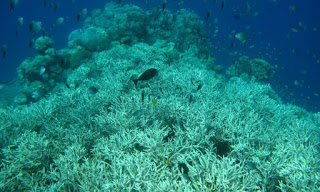 The existence of coral reefs, in all their abundant biodiversity and beauty, relies largely on a complex symbiosis between reef-building corals and microalgae. This finely tuned, fragile, partnership is constantly under threat from environmental stress—most notably the twin effects of warming waters and ocean acidification caused by climate change. But scientists say a third driver, that of ocean deoxygenation, could pose a greater and more immediate threat to coral reef survival.
The existence of coral reefs, in all their abundant biodiversity and beauty, relies largely on a complex symbiosis between reef-building corals and microalgae. This finely tuned, fragile, partnership is constantly under threat from environmental stress—most notably the twin effects of warming waters and ocean acidification caused by climate change. But scientists say a third driver, that of ocean deoxygenation, could pose a greater and more immediate threat to coral reef survival.
 Globally, there is a growing concern regarding the presence of trace emerging contaminants such as retinoids and oestrogenic endocrine-disrupting chemicals (EDCs) in aquatic environments. Retinoids such as retinoic acids and their metabolites, which are the derivatives of vitamin A, can cause abnormal morphological development in amphibians, fish, and snails at elevated levels. Oestrogenic EDCs like alkylphenols and bisphenol A are environmental estrogens that can induce feminization of male fish and abnormal development in aquatic organisms.
Globally, there is a growing concern regarding the presence of trace emerging contaminants such as retinoids and oestrogenic endocrine-disrupting chemicals (EDCs) in aquatic environments. Retinoids such as retinoic acids and their metabolites, which are the derivatives of vitamin A, can cause abnormal morphological development in amphibians, fish, and snails at elevated levels. Oestrogenic EDCs like alkylphenols and bisphenol A are environmental estrogens that can induce feminization of male fish and abnormal development in aquatic organisms.
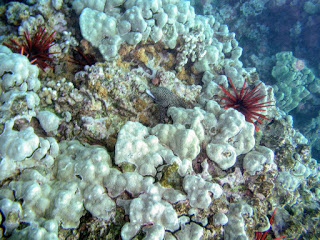 A new study by researchers at the University of Hawai‘i at Mānoa School of Ocean and Earth Science and Technology (SOEST) found that human-induced environmental stressors have a large effect on the genetic composition of coral reef populations in Hawai‘i. They confirmed that there is an ongoing loss of sensitive genotypes in nearshore coral populations due to stressors resulting from poor land-use practices and coastal pollution. This reduced genetic diversity compromises reef resilience.
A new study by researchers at the University of Hawai‘i at Mānoa School of Ocean and Earth Science and Technology (SOEST) found that human-induced environmental stressors have a large effect on the genetic composition of coral reef populations in Hawai‘i. They confirmed that there is an ongoing loss of sensitive genotypes in nearshore coral populations due to stressors resulting from poor land-use practices and coastal pollution. This reduced genetic diversity compromises reef resilience.
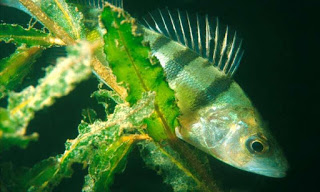 Melatonin controls the body clock—high melatonin levels make us feel tired in the evening. However, the hormone also plays an important role in animals’ biological rhythms. Artificial light at night—light pollution—can suppress the production of melatonin in fish, even at very low light intensities, a finding established by researchers from the Leibniz-Institute of Freshwater Ecology and Inland Fisheries (IGB).
Melatonin controls the body clock—high melatonin levels make us feel tired in the evening. However, the hormone also plays an important role in animals’ biological rhythms. Artificial light at night—light pollution—can suppress the production of melatonin in fish, even at very low light intensities, a finding established by researchers from the Leibniz-Institute of Freshwater Ecology and Inland Fisheries (IGB).
20. Cancer drugs could be impacting our waterways
and
Read more from original study in Society of Environmental Toxicology and Chemistry
21. Deep-sea worms and bacteria team up to harvest methane
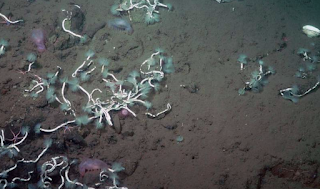 Scientists at Caltech and Occidental College have discovered a methane-fueled symbiosis between worms and bacteria at the bottom of the sea, shedding new light on the ecology of deep-sea environments. They found that bacteria belonging to the Methylococcaceae family have been hitching a ride on the feathery plumes that act as the respiratory organs of Laminatubus and Bispira worms. Methylococcaceae are methanotrophs, meaning that they harvest carbon and energy from methane, a molecule composed of carbon and hydrogen.
Scientists at Caltech and Occidental College have discovered a methane-fueled symbiosis between worms and bacteria at the bottom of the sea, shedding new light on the ecology of deep-sea environments. They found that bacteria belonging to the Methylococcaceae family have been hitching a ride on the feathery plumes that act as the respiratory organs of Laminatubus and Bispira worms. Methylococcaceae are methanotrophs, meaning that they harvest carbon and energy from methane, a molecule composed of carbon and hydrogen.
A new study by researchers at Woods Hole Oceanographic Institution (WHOI) and their international colleagues found that freshwater runoff from rivers and continental shelf sediments are bringing significant quantities of carbon and trace elements into parts of the Arctic Ocean via the Transpolar Drift–a major surface current that moves water from Siberia across the North Pole to the North Atlantic Ocean. In 2015, oceanographers conducting research in the Arctic Ocean as part of the International GEOTRACES program found much higher concentrations of trace elements in surface waters near the North Pole than in regions on either side of the current. Their results published this week in the Journal of Geophysical Research-Oceans.
An international team of researchers has found that large ocean predators such as tuna, marlin and sharks are more active in temperate regions. In their paper published in the journal Nature Communications, the group describes their analyses of data on attacks by predators on fishing bait in the open ocean over more than a half-century, and what it showed them.
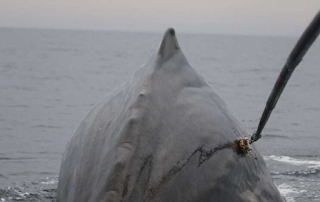 New sonar technology is as disruptive to sperm whales as existing sonar technology, according to new research led by the University of St Andrews. While pulsing sonar has been used by navies around the world for years, the effect of new continuous sonar on sea mammals had not been tested before. Now, an international team of researchers led by Professor Patrick Miller at the University of St Andrews has examined the impact of this new technology on sperm whales with the first at-sea experiments.
New sonar technology is as disruptive to sperm whales as existing sonar technology, according to new research led by the University of St Andrews. While pulsing sonar has been used by navies around the world for years, the effect of new continuous sonar on sea mammals had not been tested before. Now, an international team of researchers led by Professor Patrick Miller at the University of St Andrews has examined the impact of this new technology on sperm whales with the first at-sea experiments.
Read more from “Phys.org”
and
Read more from Journal of Experimental Biology
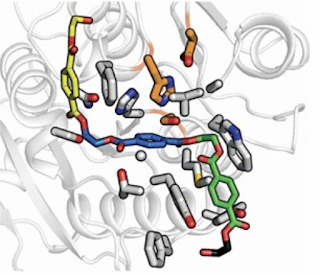 Up to 90% of the popular plastic can be broken into monomers in a matter of hours. By tweaking an enzyme known for breaking down plants’ waxy coatings, scientists have come up with an environmentally friendly way to recycle poly(ethylene terephthalate) (PET)—the popular plastic found in soda bottles and many types of food packaging. The method efficiently cleaves PET into its constituent monomers, which can then be reused to build the plastic all over again. More than 60 million metric tons of PET are produced each year, much of which is not recycled. The most common recycling technique, a thermomechanical process, produces material with mechanical properties that are inferior to those of virgin PET.
Up to 90% of the popular plastic can be broken into monomers in a matter of hours. By tweaking an enzyme known for breaking down plants’ waxy coatings, scientists have come up with an environmentally friendly way to recycle poly(ethylene terephthalate) (PET)—the popular plastic found in soda bottles and many types of food packaging. The method efficiently cleaves PET into its constituent monomers, which can then be reused to build the plastic all over again. More than 60 million metric tons of PET are produced each year, much of which is not recycled. The most common recycling technique, a thermomechanical process, produces material with mechanical properties that are inferior to those of virgin PET.
———————————————–

